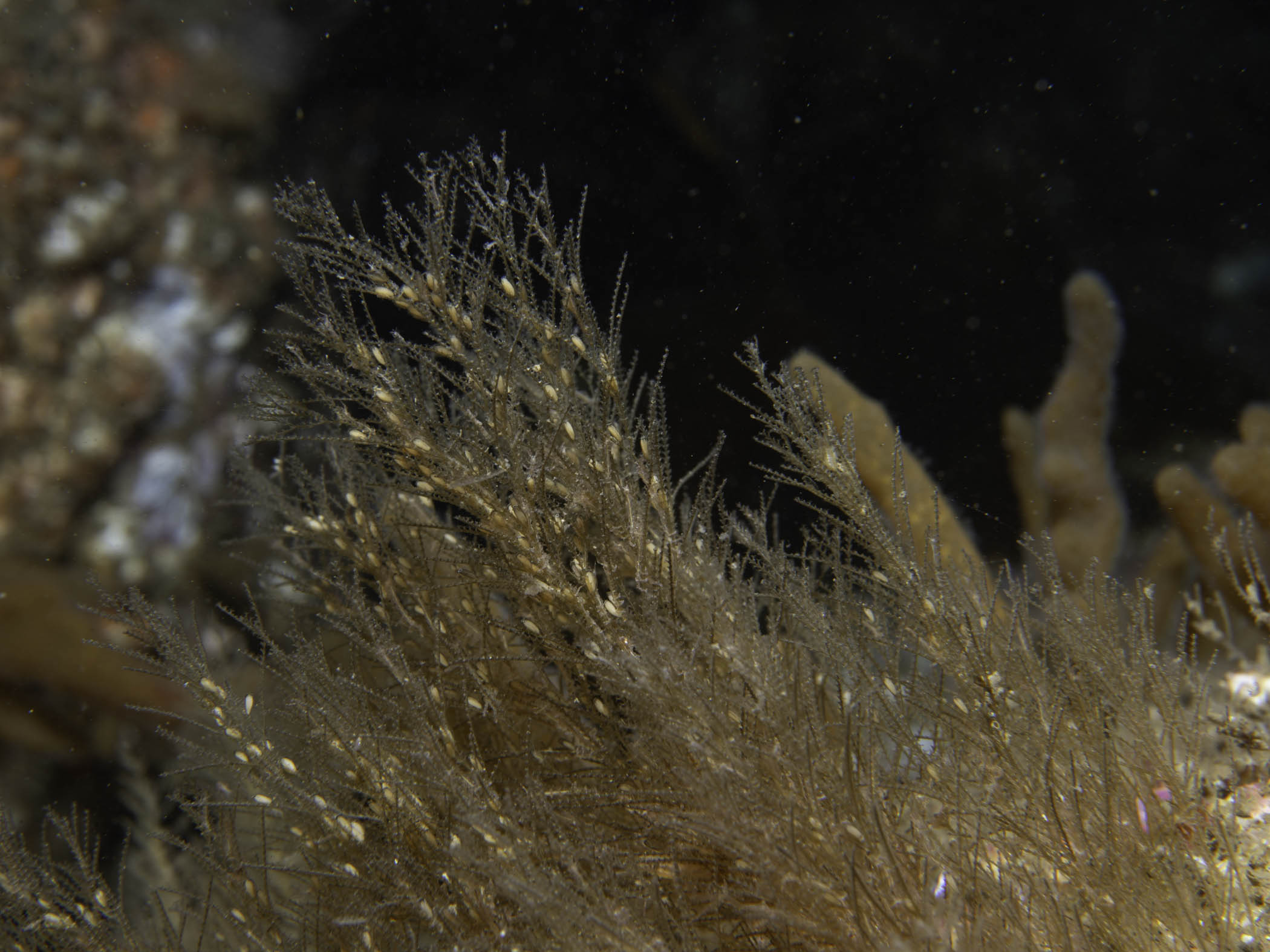| CNIDARIA : Leptothecata : Sertulariidae | SEA ANEMONES AND HYDROIDS |
Amphisbetia operculata (Linnaeus, 1758)
 |
| Amphisbetia operculata |
Description: This hydroid consists of fine, sparsely branched stems bearing paired hydrothecae. The hydrothecae are triangular in shape, with a hair-like outer cusp. The stems are usually clustered into small bushes, and are golden-brown in colour. Typically colonies measure 100mm in height.
Habitat: This species is especially characteristic of the infralittoral zone where strong wave action or tidal streams are present. It normally grows on stipes of the kelp, Laminaria hyperborea, but may also attach directly to bedrock.
Ecology: The nudibranch Doto eireana feeds exclusively on this hydroid.
Distribution: Widespread on western coasts of the British Isles.
Similar Species: This is a distinctive species, with finer branches than most sertulariid hydroids.
Key Identification Features:
- Main stems sparsely branched, with paired, opposite hydrothecae
- Golden brown colour
- Normally on kelp stipes
Distribution Map from NBN: Amphisbetia operculata at National Biodiversity Network mapping facility, data for UK.
iNaturalist: Amphisbetia operculata at iNaturalist World Species Observations database.
GBIF data for Amphisbetia operculata
WoRMS: Amphisbetia operculata at World Register of Marine Species. Accepted name: Amphisbetia operculata (Linnaeus, 1758). AphiaID: 117874.
Classification: Biota; Animalia; Cnidaria; Medusozoa; Hydrozoa; Hydroidolina; Leptothecata; Sertularioidea; Sertulariidae; Amphisbetia
| Previous species | Next species |
| Picton, B.E. & Morrow, C.C. (2024). Amphisbetia operculata. (Linnaeus, 1758). [In] Encyclopedia of Marine Life of Britain and Ireland. https://www2.habitas.org.uk/marbiop-ni/speciesaccounts.php?item=D6320. Accessed on 2025-04-04 |

